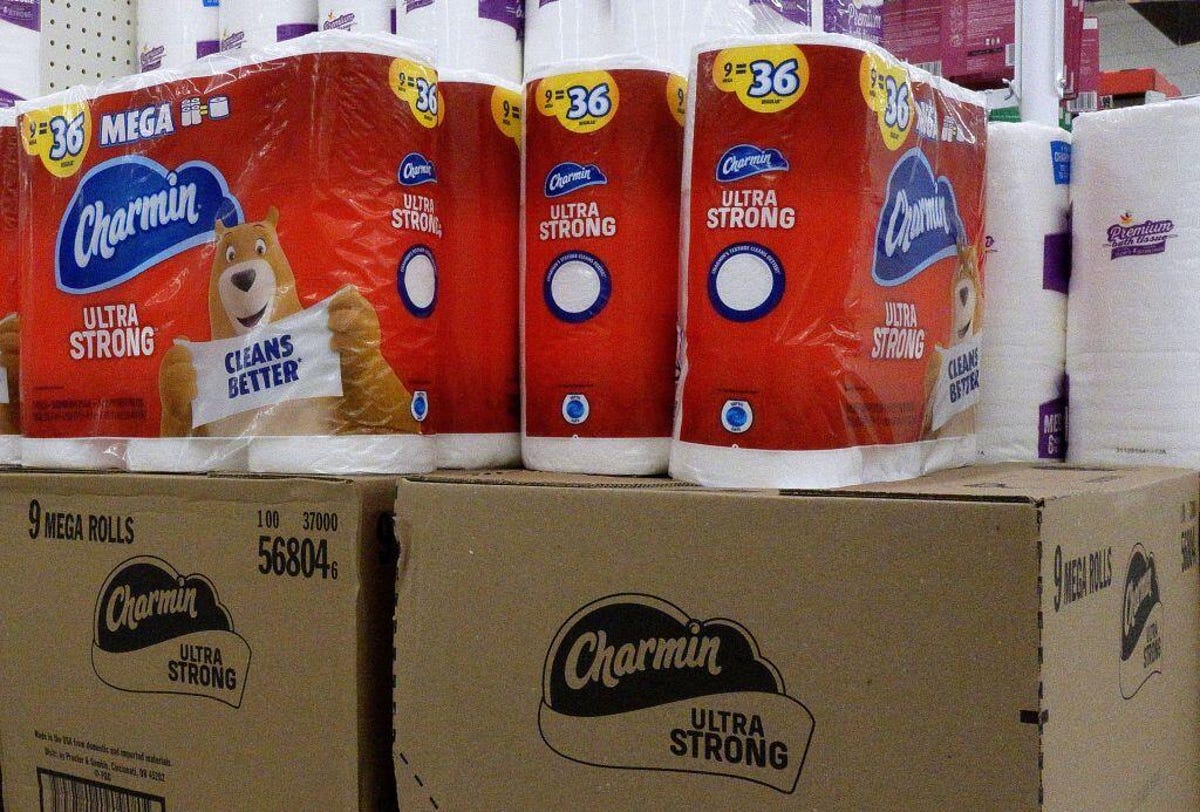US consumers have been feeling the effects of high rates of inflation on their pocketbooks for nearly three years. While off the 7.5% peak for all items in 2021, prices continue to rise around 3% per year, and your dollar continues to do a bit less for you. On a shelf of price increases, it can feel downright magical when you see that your favorite snack or preferred brand of toilet paper has remained the same price.
Without double checking, you whisk your items home, feeling like you got the deal of the week… only to find that your chip bag is somehow more full of air than chips and your toilet paper rolls are suspiciously skinny. This is “shrinkflation,” or when companies shrink their products and packaging instead of raising their prices.
If you’ve heard about shrinkflation a lot lately, you’re not alone. As more and more Americans continue to face rising prices, inflation and its cousin shrinkflation have been getting increasing attention from pundits, politicians and even puppets (or rather, Muppets).
This attention reached prime time in President Joe Biden’s 2024 State of the Union speech on March 7, when he took on “corporations that engage in price gouging or deceptive pricing from food to health care to housing.” Biden went on to specifically call out shrinkflation, remarking that “snack companies think you won’t notice when they charge you just as much for the same size bag but with fewer chips in it.”
Regardless of whether you’re well aware of shrinkflation, or this is the first time you’re hearing about it, we’ve rounded up everything you need to know about shrinkflation. For more, here are the best credit cards for groceries and the best credit cards for everyday use.
What does ‘shrinkflation’ mean?
Shrinkflation is the practice by companies of reducing the size or quantity of a product while keeping the same price. It can mean fewer chips in the bag, or fewer scoops of ice cream in the container. Basically, the purchase price remains the same but the cost per unit rises.
Customers may not notice what are effectively price increases, John Gourville, a professor of business administration at the Harvard Business School. “We found that consumers reacted greatly to periodic changes in price, but not at all to periodic (yet systematic) reductions in quantity,” Gourville said in an interview back in 2004.
Some companies disguise shrinkflation with a package redesign, according to Gourville, like adding dents to the bottom of bottles or touting claims of “lower calories.”
Is shrinkflation legal?
While shrinkflation is currently legal, as long as companies are indicating that there has been change in size on their package, something that it seems only eagle-eyed consumers are able to catch. However, this might not be the case for very long, if lawmakers have a say.
Sen. Bob Casey, a Democrat from Pennsylvania, has introduced legislation that would help crack down on companies that are taking part in shrinkflation. According to Casey’s website, the bill would allow the Federal Trade Commission to declare shrinkflation an “as an unfair or deceptive act or practice [and] prohibit … manufacturers from engaging in shrinkflation,” and would enable federal and state authorities to pursue legal action against those companies and manufacturers.
How can I protect myself against shrinkflation?
Consumers tend to pay more attention to product prices than package sizes. Breaking that habit is the top tip for steeling yourself against shrinkflation: learn the package sizes and per-unit pricing for your favorite products.
If you notice that a product has shrunk or reduced the number of included items, consider competitors who offer a similar product at a lower cost per ounce or item. Compare per-unit prices to see which product provides a better deal.

Charmin has reportedly reduced the amount of toilet paper in its Mega package from 266 sheets per roll to 244.
Shrinkflation also offers an opportunity to wean yourself off packaged foods. Retailers might be able to make cereal boxes and granola bars smaller, but they can’t shrink a pound of apples.
Consumer advocate Edgar Dworsky has made shrinkflation (or “downsizing,” as he calls it) a major focus of his website MousePrint, which is dedicated to examining the fine print of advertising claims.
Every few months, Dworsky publishes compilations of all the products he’s found that have recently decreased in size. He usually posts on Mondays and crowdsources items from his readers to get a fuller picture of which products have changed.
The subreddit r/shrinkflation also serves as a good source for tracking package size changes for your favorite products. Users post instances of shrinkflation that they’ve found in their local stores or online, usually with screenshots or photos as evidence.
Which products have shrunk?
Consumers have reported shrinkage in all kinds of household products over the past few months, with these examples stretching back into late last year.
A keen eye on Reddit found that Crest 3D White Toothpaste has shrunk from 3.8 to 3.3 ounces.
Huggies Baby Wipes have lost wipes from their packages, dropping from 768 to 704 wipes in each package.
Hot Tamales candies have shrunk from 5 to 4.25 ounces.
Equate Liquid Hand Soap, Walmart’s in-house brand, decreased its volume by 6 ounces, from 56 to 50 ounces.




















+ There are no comments
Add yours